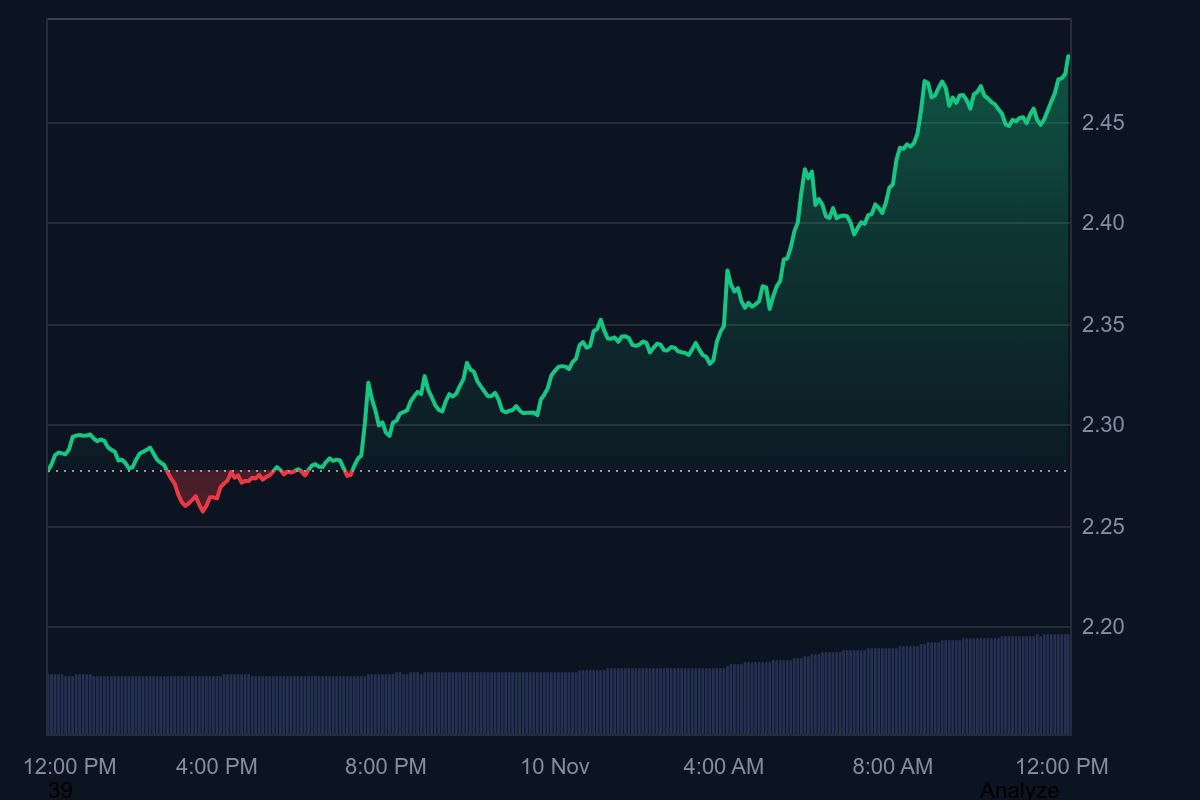XRPL Smart Contracts Launch on AlphaNet as XRP Ledger Evolves Beyond Payments
0
0

Last updated on November 10, 2025
This Article Was First Published on The Bit Journal.
XRPL smart contracts are now live on AlphaNet, marking a major upgrade for the XRP Ledger. According to the developer post, the new feature allows developers to build and test WebAssembly-based contracts directly on the ledger for the first time. This opens a fresh chapter for XRPL as it evolves from a payments-only network into a programmable application platform.
The XRP Ledger, which began in 2012, was known for lightning-fast payments, an on-ledger DEX, and native token issuance. Now, with XRPL smart contracts, developers can write and deploy logic that interacts seamlessly with payments, NFTs, tokens and escrow features on the ledger.
Developers Get a Hands-On Playground
Through the AlphaNet environment, developers have a live sandbox at their disposal where they can deploy and test contracts prior to the mainnet launch. The upgrade brings new transaction types – ContractCreate, ContractCall, ContractModify among others – which will facilitate the control of the entire lifetime of a contract by allowing the developers to manage its creation, execution, and even modification.
| Feature | Description |
|---|---|
| ContractCreate | Deploys a contract’s WASM bytecode |
| ContractCall | Executes a function in the contract |
| ContractModify | Updates contract logic or permissions |
| Native Integration | Enables contracts to trigger XRP payments, tokenisation, NFT minting |
Because these contracts integrate with XRPL’s native features, the term “XRPL smart contracts” means more than just “programmable code”, it speaks to logic that interacts directly with ledger primitives.
“Deploy WebAssembly bytecode to pseudo-accounts and call it via ContractCall”
A Broader Push Toward On-Chain Growth
According to recent ecosystem metrics, XRPL is showing meaningful signals of adoption. For example:
- The price of XRP stood around $2.47 USD, with a circulating market cap hovering near $148.88 billion.
- Stablecoins issued on XRPL held a market cap of approximately $306.4 million, with the dominant one controlling about 67.9% of that supply.
- Reported TVL (Total Value Locked) in XRPL-native DeFi protocols ranged from $64.8 million to $84.4 million, depending on source and scope.
These numbers show XRPL smart contracts are arriving when the ecosystem is already showing momentum in assets, stablecoins and application architecture.

How XRPL Smart Contracts Compare
The XRPL has taken a different path than traditional smart contract-only networks. It has already taken a step forward with its approach to simplicity and interoperability. Developers are able to create contracts using WebAssembly, which is a format that supports a number of languages such as Rust and C++. Furthermore, since the contracts are part of the XRPL’s structure, they are able to take advantage of its security, speed, and low fees.
This makes it easier to port logic from other chains and reduces the complexity of bridging external networks. The end result: a lower barrier for developers and new projects that can build on XRPL’s native rails of payments, tokens and exchanges.
Market Reaction and Future Expectations
While the smart contract system is currently live on AlphaNet and remains in testing stage, early reactions from the dev community have been positive. Meanwhile, feed-in factors like the expected introduction of spot XRP ETFs and rising institutional interest in XRPL may act as catalysts.
With XRP trading around $2.46 and ecosystem metrics ascending, the stage is set. The arrival of XRPL smart contracts could unlock new flows of tokenised assets, automated escrow logic, and application-specific payments built directly on XRPL.
Conclusion
XRPL smart contracts signal a meaningful upgrade for the XRP Ledger. With support for WebAssembly, native transaction interaction and a permission-less model on AlphaNet, the new layer offers developers a potent toolkit.
For issuers, it yields broader paths to tokens, assets and programmable flows. Watch closely, the groundwork is laid and now comes the creative phase. XRPL smart contracts might redefine what XRPL contributes to the blockchain ecosystem.
Glossary of Key Terms
- WASM (WebAssembly): A novel binary instruction format that enables running codes with high efficiency on different platforms.
- Pseudo-account: An extraordinary ledger address that contains contract logic instead of being controlled by a human private key.
- TVL (Total Value Locked): A rough estimation of the health of the whole ecosystem based on the total value of assets locked or staked in the protocols.
- RWA (Real-World Assets): Assets that are traditional and tokenized held on-chain.
- Stablecoin: A digital asset that is tied to a stable asset (usually the US Dollar) and is used for maintaining value and settling transactions.
FAQs About XRPL Smart Contracts
Q: Where are XRPL smart contracts live right now?
A: They are available on the XRPL AlphaNet, which is a testing network for developers.
Q: When will XRPL smart contracts launch on the main network?
A: The exact timeline depends on developer feedback and community voting on amendments.
Q: What makes XRPL smart contracts different from Ethereum-style contracts?
A: They use WebAssembly instead of Solidity and can interact directly with XRPL’s native features like payments and tokens.
Q: What is the role of pseudo-accounts in XRPL smart contracts?
A: They store and execute contract code, keeping user accounts separate from contract logic.
Read More: XRPL Smart Contracts Launch on AlphaNet as XRP Ledger Evolves Beyond Payments">XRPL Smart Contracts Launch on AlphaNet as XRP Ledger Evolves Beyond Payments
0
0
 Manage all your crypto, NFT and DeFi from one place
Manage all your crypto, NFT and DeFi from one placeSecurely connect the portfolio you’re using to start.





